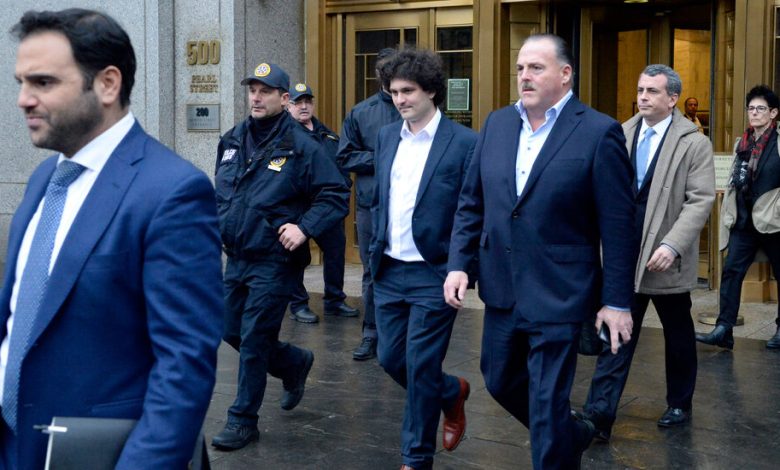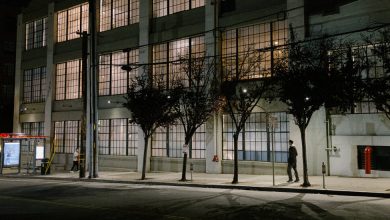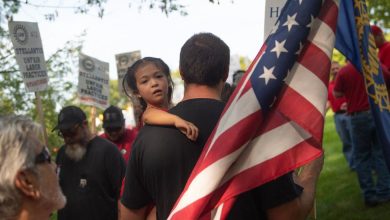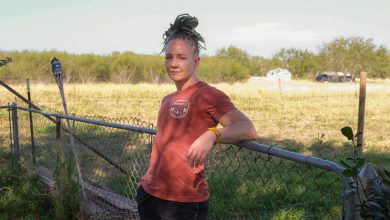Top FTX Executive Says Sam Bankman-Fried Used Customer Money for ‘Excess’ Spending

Nishad Singh, a former top executive at the once high-flying FTX crypto exchange, testified on Monday that his former boss, Sam Bankman-Fried, used customer money to engage in large and extravagant spending sprees that “reeked of excess.”
At Mr. Bankman-Fried’s criminal fraud trial, which has become a referendum on the crypto industry’s volatility and risk-taking, Mr. Singh said he had clashed with the FTX founder over the hundreds of millions of dollars that the company used to buy lavish real estate, invest in start-ups and sign celebrities and sports stars like Tom Brady, Steph Curry and Larry David.
“I felt embarrassed and ashamed,” Mr. Singh, 28, said of one investment that FTX made in a firm, K5, that had ties to many celebrities.
Speaking for nearly three hours in Manhattan federal court, Mr. Singh said that he had learned about an “enormous” $8 billion hole in FTX customer deposits about two months before the firm collapsed last November, and that much of the missing money had financed Mr. Bankman-Fried’s lavish spending.
Mr. Bankman-Fried, 31, has been charged with orchestrating a scheme to funnel billions of dollars of FTX customer deposits into a trading firm he also owned, Alameda Research. Prosecutors claim that he also used the money for political contributions, venture capital investments and real-estate purchases.
Mr. Singh is one of three key executives in Mr. Bankman-Fried’s business empire who have pleaded guilty to fraud and, hoping for leniency in return, agreed to work with prosecutors investigating FTX’s collapse. The others, Gary Wang and Caroline Ellison, testified last week that Mr. Bankman-Fried directed them to commit crimes that led to FTX’s implosion. A fourth top executive, Ryan Salame, has also pleaded guilty but declined to cooperate with authorities.
Mr. Singh has known Mr. Bankman-Fried and his family since he was a teenager in the San Francisco Bay Area. He was a close friend of Mr. Bankman-Fried’s younger brother, Gabe, and had a rapport with his mother, the Stanford law professor Barbara Fried.
At FTX, Mr. Singh served as the head of engineering. Prosecutors have said that Mr. Bankman-Fried instructed Mr. Singh and Mr. Wang to design computer code that allowed Alameda to borrow virtually limitless amounts of money from FTX customers. Mr. Singh was also part of an inner circle of Mr. Bankman-Fried’s advisers who lived with the founder in a penthouse in the Bahamas, where FTX was headquartered.
The courtroom was a little more crowded than usual for Mr. Singh’s testimony. The federal prosecutors overseeing the case were joined by their boss, Damian Williams, the U.S. attorney for the Southern District of New York, who sat in the front row for part of the morning.
And a couple of rows from the back was Mr. Singh’s longtime girlfriend, Claire Watanabe, a former FTX executive who lived with the company’s leadership in the Bahamas penthouse.
On the witness stand, Mr. Singh, who said he was a billionaire while working at FTX, testified that he conspired with Mr. Bankman-Fried, Ms. Ellison, Mr. Wang and Mr. Salame in committing the crimes to which he had pleaded guilty. He described how Mr. Bankman-Fried wielded great authority at FTX and Alameda, and made most of the final business decisions for the companies.
“I’ve always been intimidated by Sam,” Mr. Singh said. “Sam is a formidable character, and I had a lot of respect for him. But over time, that eroded.”
Mr. Bankman-Fried spent “excessive” amounts of Alameda’s funds, Mr. Singh said. When he pushed back in one instance, Mr. Bankman-Fried “got visibly mad” and told Mr. Singh it was “people like me sowing seeds of doubt in the company that are the real problem here,” he testified. “It was pretty humiliating.”
Mr. Singh also detailed Mr. Bankman-Fried’s interest in partnering with K5, a California investment company led by a former Hollywood agent, Michael Kives, which worked closely with celebrities. Mr. Bankman-Fried raved about a Super Bowl party organized by K5 that he had attended, Mr. Singh said, and the “impressive” guest list that included Jeff Bezos, Hillary Clinton, Leonardo DiCaprio, Kris Jenner and Kendall Jenner.
Mr. Bankman-Fried had said it was “the most impressive group of people he ever met in one location,” Mr. Singh said.
When Mr. Bankman-Fried presented the terms for investing in K5, Mr. Singh said he was shocked by the amount of money involved and the favorable terms to K5 and expressed his concerns. The investment totaled several hundred million dollars, Mr. Singh said.
“I was worried about partnering with K5 and giving them this much money would be toxic to FTX and Alameda culture,” he said.
Mr. Singh also described Mr. Bankman-Fried’s spending in the Bahamas. The FTX founder’s advisers had disagreed over whether to close on the Albany, a penthouse where the group lived, Mr. Singh said. Although Mr. Bankman-Fried preferred the Albany, which was the more expensive of two housing options, others disagreed partly because it was “super ostentatious,” Mr. Singh said.
Mr. Bankman-Fried replied that he would pay $100 million “for the drama to just go away,” Mr. Singh said, adding that he took that “as a clear sign that I should just shut up and we should move forward on this.”
The day before Mr. Singh’s testimony, Mr. Bankman-Fried’s lawyers wrote a letter to the judge saying that he had not received his proper dosage of the stimulant medication Adderall. They said that Mr. Bankman-Fried’s decision to testify at trial might rest on whether he could get the proper dosage at the Metropolitan Detention Center in Brooklyn, where he is being held. Adderall is often used to treat A.D.H.D.
“The defense has a growing concern that because of Mr. Bankman-Fried’s lack of access to Adderall, he has not been able to concentrate at the level he ordinarily would and that he will not be able to meaningfully participate in the presentation of the defense case,” his lawyers told the court.





